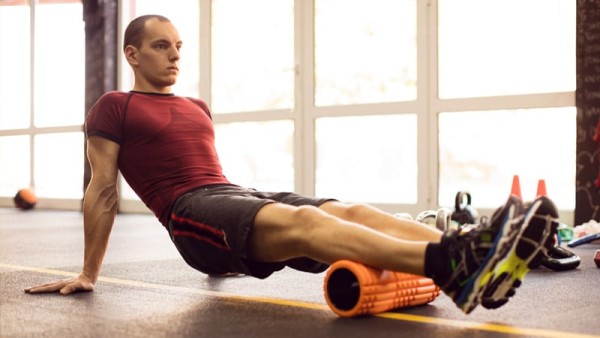Want a deep tissue massage without the big price tag? Let us introduce you to foam rolling.
Foam rolling is a type of self-myofascial release that can be used to help relieve muscle knots and trigger points. Our fascia is the thin tissue that wraps and connects our muscles, bones, nerves and blood vessels. For a variety of reasons, such as muscle injury, inactivity, disease, inflammation, or trauma, the fascia can become stiff and bind up. Foam rolling can be an effective way to help lengthen and release the built-up tension in the fascia by breaking up adhesions and scar tissue to help speed up the healing and recovery process after a workout. It can also be an effective way to help loosen up common areas of tightness before a workout.
When shopping for a foam roller you’ll notice they come in all different shapes and sizes. The three main things to consider are:
- Density – The denser the roller, the deeper the massage will be. If you’re just starting out using a foam roller, choose one that’s on the softer side and progress from there.
- Surface texture – Similarly, a smooth roller should be used for someone that’s just getting into rolling as the pressure is not as intense. Once you feel comfortable with a smooth roller, textured rollers can be used to provide a more precisely targeted massage.
- Shape/size – The length of the roller used is more of a personal preference, and often will depend on the space available. Long rollers are the most versatile as they can be a bit more stable when you’re working on bigger body parts, however the shorter rollers work well when targeting smaller areas and can be easier to carry around and use in a small area.
Here are some examples of the different types available:
Ready to roll? Try these 7 foam rolling exercises before or after your next workout and feel the benefits of myofascial release!
Calves:
Sit on the floor with your legs straight out in front of you. Using your hands for support, place the roller under the calves and slowly roll from the knee down to the ankle. Increase or decrease pressure by using one or both legs at a time, or placing one leg on the other for even more pressure.
Hamstrings:
Sit on the floor and place the roller under your thighs. Use your hands to lift your hips and then roll from the knees to the glutes. To increase the pressure, you can place one leg over the other.
Quads:
Lie facedown and place the roller under the front of your thighs. Use your forearms to shift back and forth to slowly roll up and down from the hip to the top of your knee.
Iliotibial Band (ITB):
Lie on your left side with the foam roller near the left hip. Cross your right leg over your left and rest your right foot on the floor with the knee bent. Using your forearm, roll along your outer thigh from the outer hip to just above the knee. You can increase the pressure by putting your right leg on top of your left. Repeat both sides.
Adductor:
Lie on your stomach and extend one leg out to the side with the knee bent. Place the foam roller near your groin on the side of the extended leg. Support yourself using your elbows and roll your inner thigh, from your groin to just above your knee.
Glutes:
Sit on the foam roller and cross your right leg over your left knee. Lean toward the right hip, putting your weight on your hands for support. Roll back and forth, and then repeat both sides.
Back:
Position the foam roller beneath your shoulder blades. Support your head with your hands and keep your knees bent and feet flat on the floor. Control the back and forth motion with your feet, rolling from your head to your mid-back.













